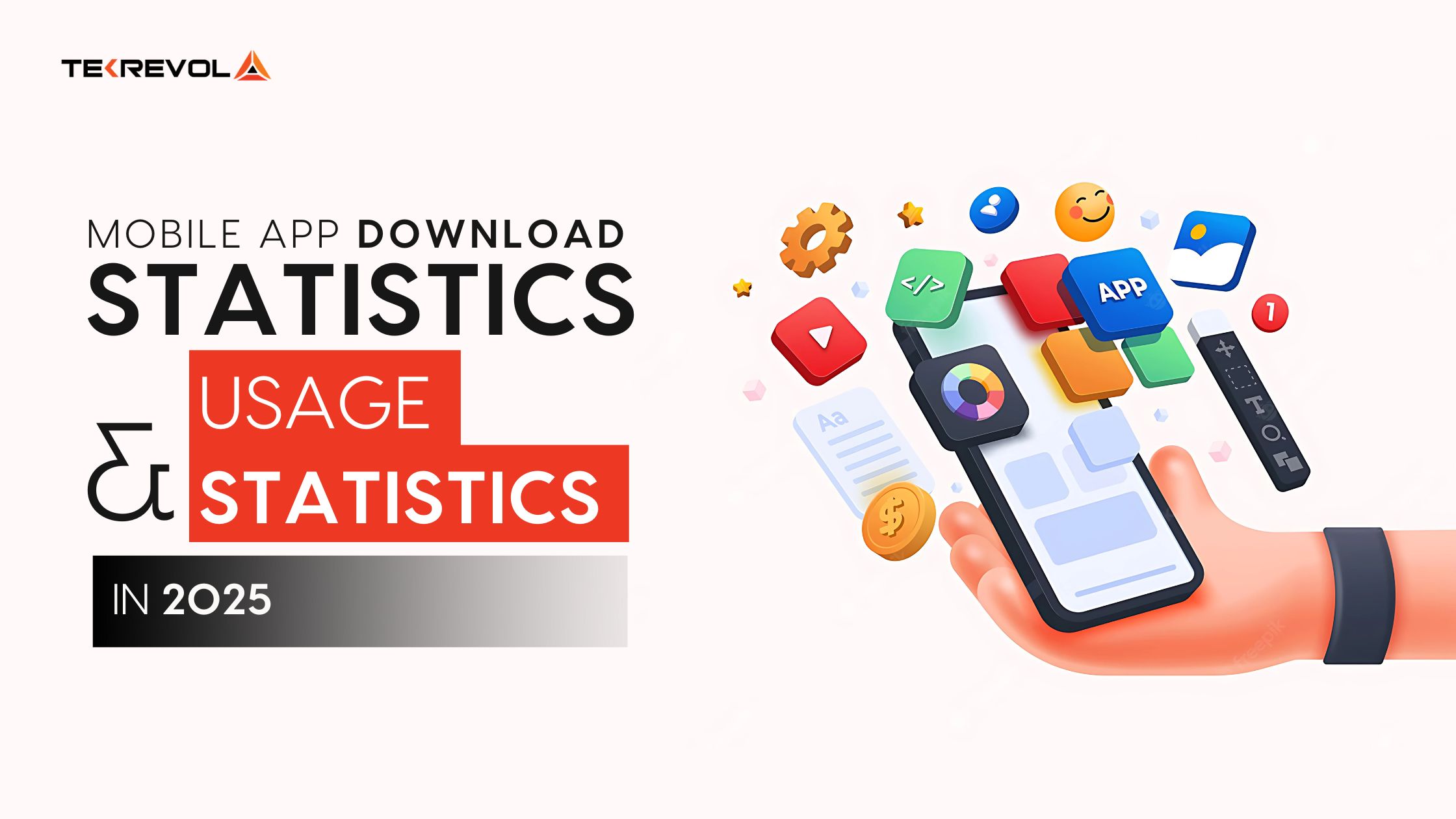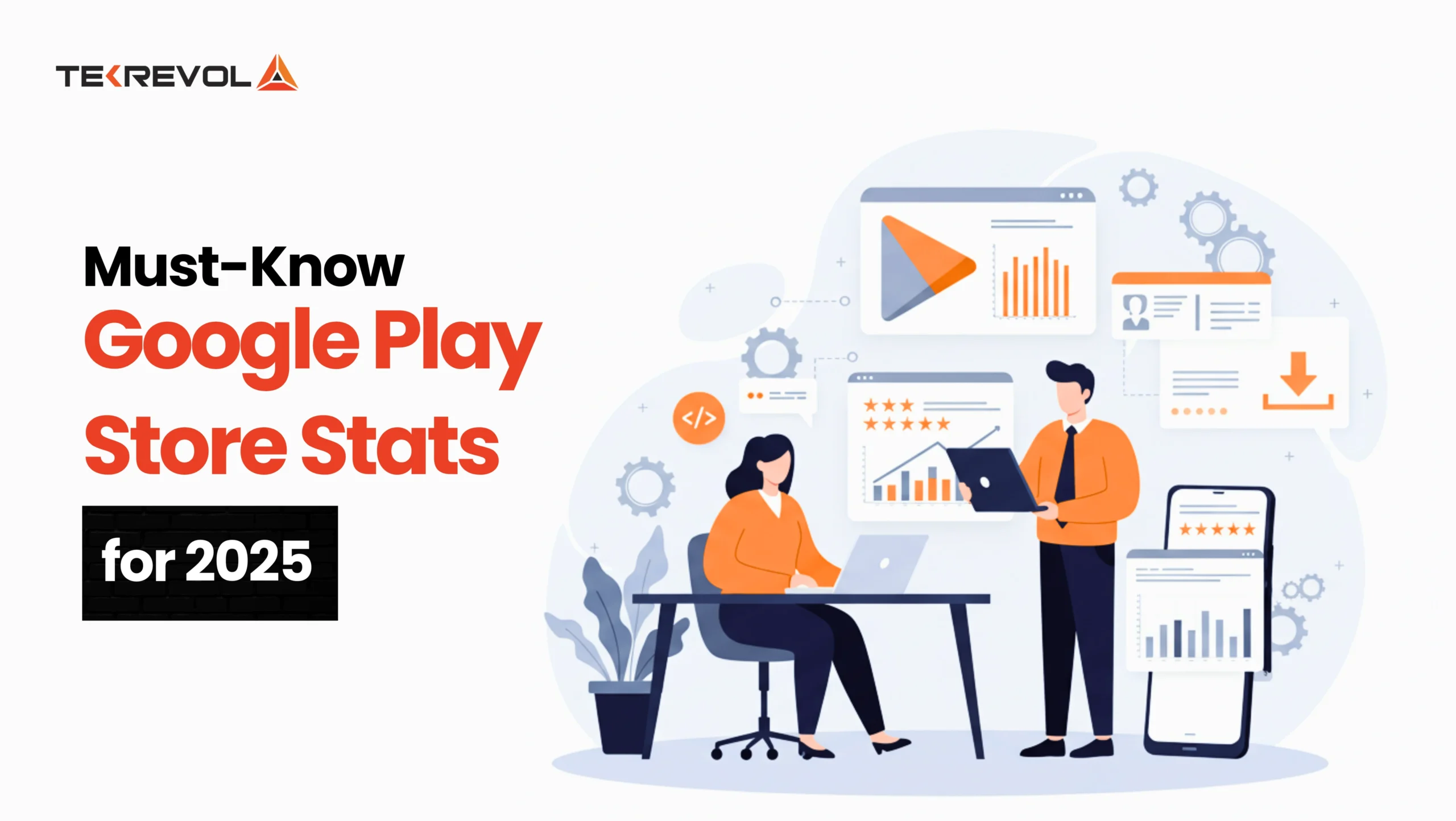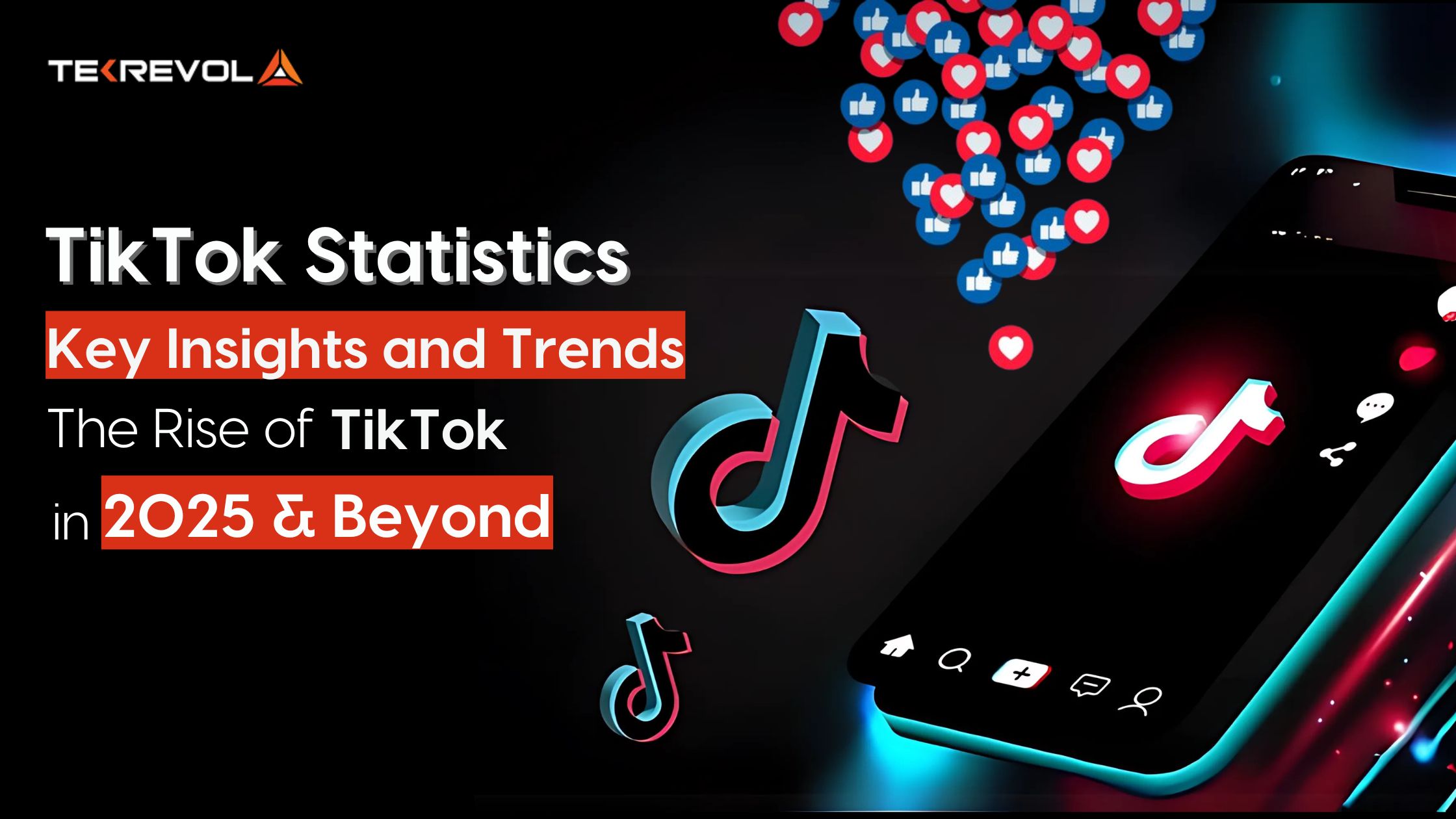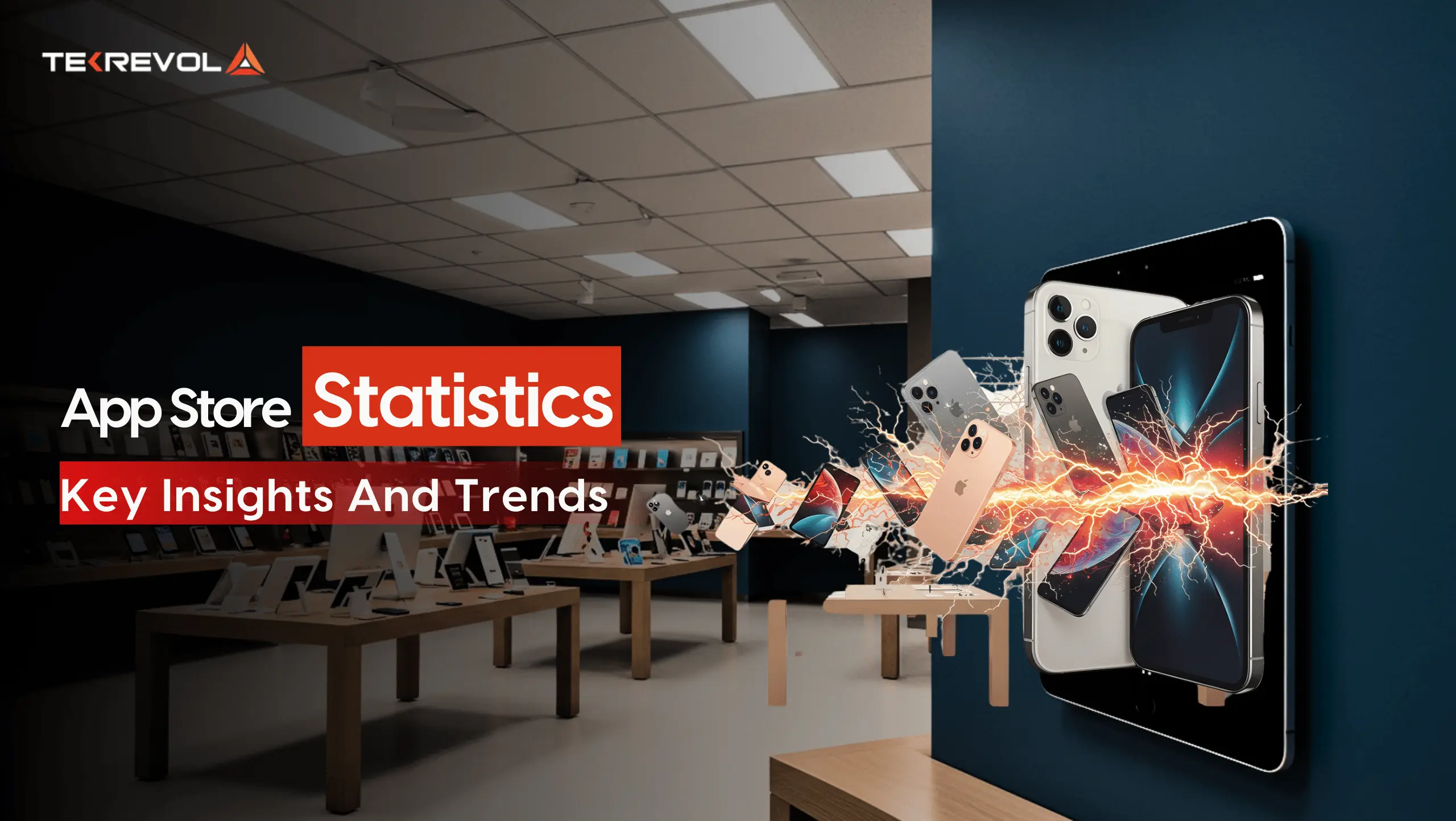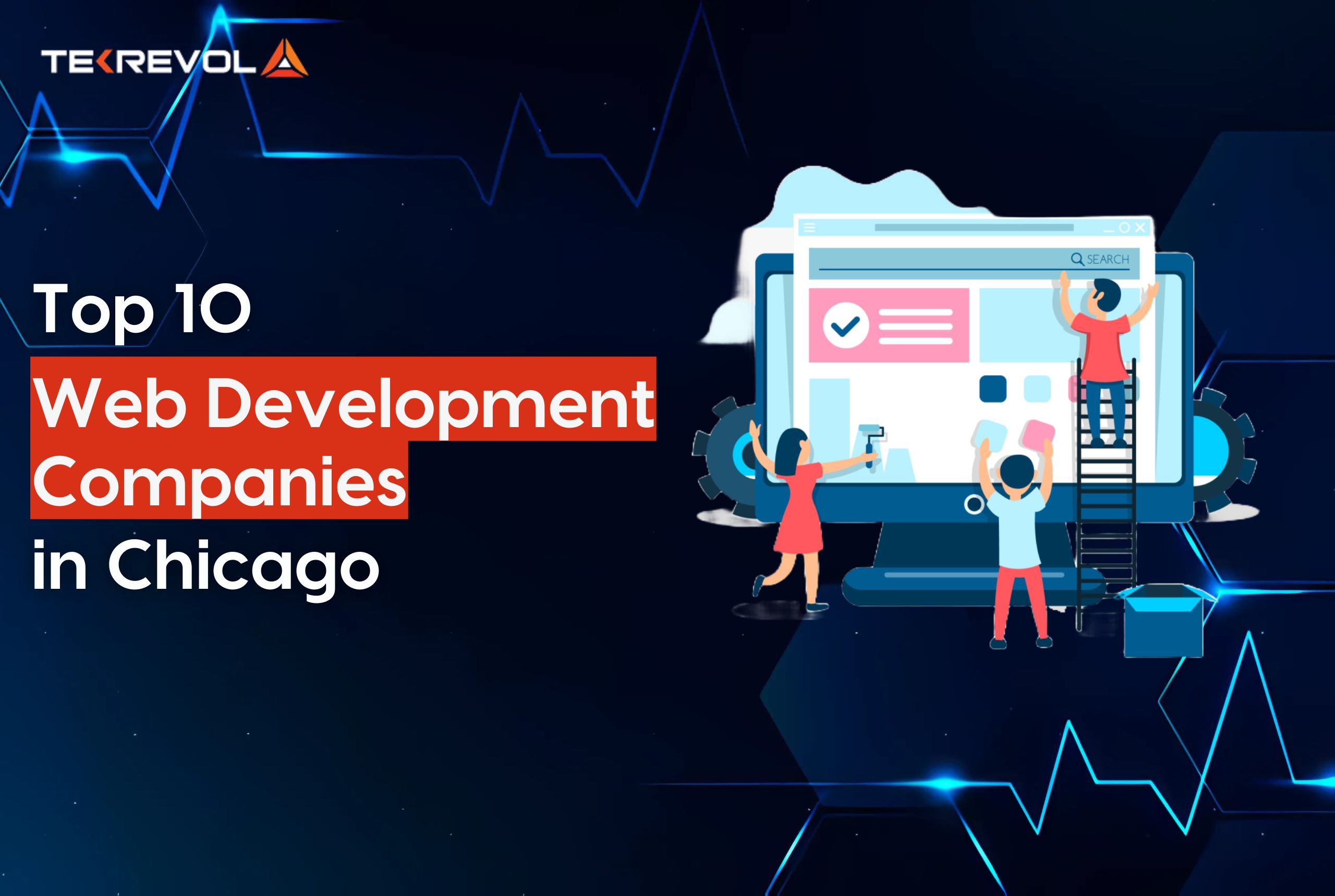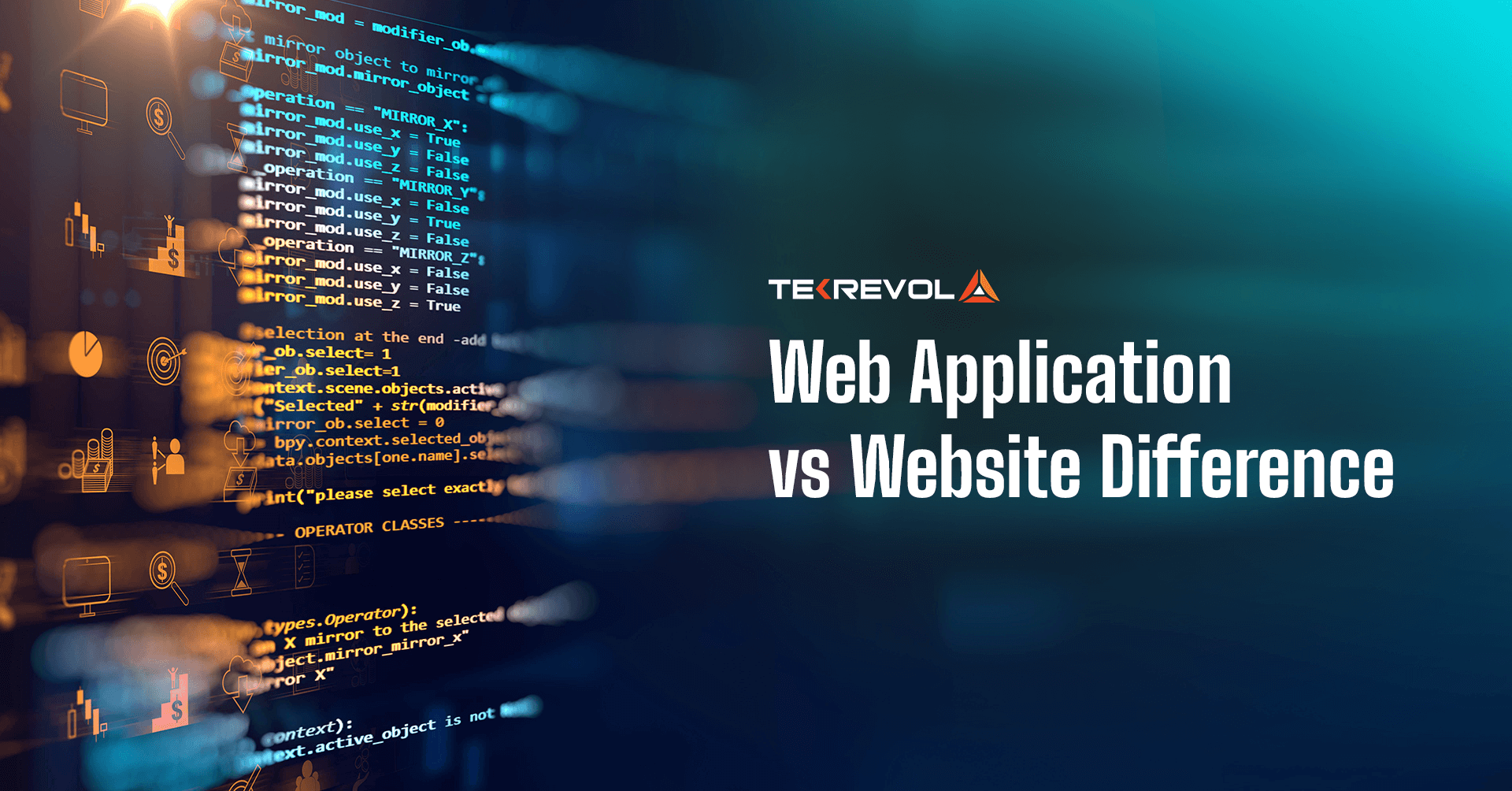The word ‘Gamification’ has got the attention of the tech industry or should we say, it’s the new trend that everyone is talking about. Gamification marketing has opened a new portal to grow businesses in the digital world conceptualizing the interaction based on a true objective.
Today, every other business in the world is either working on a Gamification marketing strategy or it is the main focus of the marketing heads to expand business. Among many other regions, the UK has been observed as a solid candidate to implement gamification practices.
There is a continual rise in the marketing sector of the UK and different business sectors allocated more than 20% of their budget to marketing as per the early survey in 2023. That’s the primary reason you see a boost in the popularity of every game development company in UK.
So, if you are curious about gamification marketing which is obvious considering the current scenario, this blog is for you. From the core understanding of gamification to its wider impact and implementation, we’ll cover every aspect in this guide.
- Turn App Engagement into a Game!
- Embark on an Exciting Gamification Journey to Ensure Optimal Business Growth.
Let’s start with the basics, jumping towards the concept behind this terminology.
What is Gamification in Marketing?
Gamification marketing is an efficient marketing method to turn a process into a game to increase user interaction and retain more customers. It enables you to build a relationship with the consumer by keeping them connected through gamified experiences.
This marketing technique involves multiple gaming components like points, badges, challenges, and rewards to keep the customer engaged. There are already multiple gamification marketing examples that are based on such tactics to interact with customers.
By tapping into fundamental human desires for competition, achievement, and recognition, gamification transforms normal actions into interactive and enjoyable experiences.
The Psychology Behind Gamification
The concept of gamification is based on the motivation, desire, and willingness to do something that is a natural human instinct. The whole psychology behind gamification marketing strategy can be easily related to Self-Determination Theory (SDT) which identifies three key psychological needs: autonomy, competence, and relatedness.
Autonomy:
Users crave control over their actions. Gamification offers choices, enhancing engagement by providing a sense of autonomy and control.
Competence:
The desire to master skills is addressed through tailored challenges. Points, badges, or leaderboards offer tangible markers of progress and achievement, reinforcing a sense of competence.
Relatedness:
Gamification fosters connection by integrating social elements. Collaboration, competition, and sharing achievements create a communal experience, satisfying the human need for relatedness.
In essence, gamification aligns with intrinsic motivators—autonomy, competence, and relatedness—forming an influential strategy that goes beyond engagement to establish genuine connections between individuals and the experiences crafted through gamified initiatives.
Evolution of Gamification in Marketing Strategies:
The evolution of gamification in marketing is directly proportional to advancements in technology and shifts in consumer behavior. Over the years, marketers have moved beyond traditional advertising methods to engage audiences in more meaningful ways.
Today, Game Developers in London are more obsessive about gamifying the applications to improve the user experience. The core idea behind gamification is to foster a deeper connection between brands and consumers apart from the promotion of products and services.
Early forms of gamification marketing strategy included simple loyalty programs. However, the scope expanded to encompass mobile apps, social media, and online communities with the rise of digital platforms.
Moreover, gamification marketing in London has become more of a strategic tool for marketers. Personalized experiences, real-time feedback, and immersive storytelling are now integral components of every successful gamification marketing platform.
The Current Landscape of Gamification Marketing
Gamification is not just a buzzword; it’s a powerhouse of growth and innovation. According to projections, the global gamification market is set to skyrocket from $9.1 billion in 2020 to an impressive $30.7 billion by 2025, showcasing a remarkable compound annual growth rate (CAGR) of 27.4%.
This surge underscores the increasing recognition of gamification as a pivotal strategy in the marketing arsenal. That’s why it has become mandatory for every Mobile App Development Company in London to integrate gamification to meet the market demand.
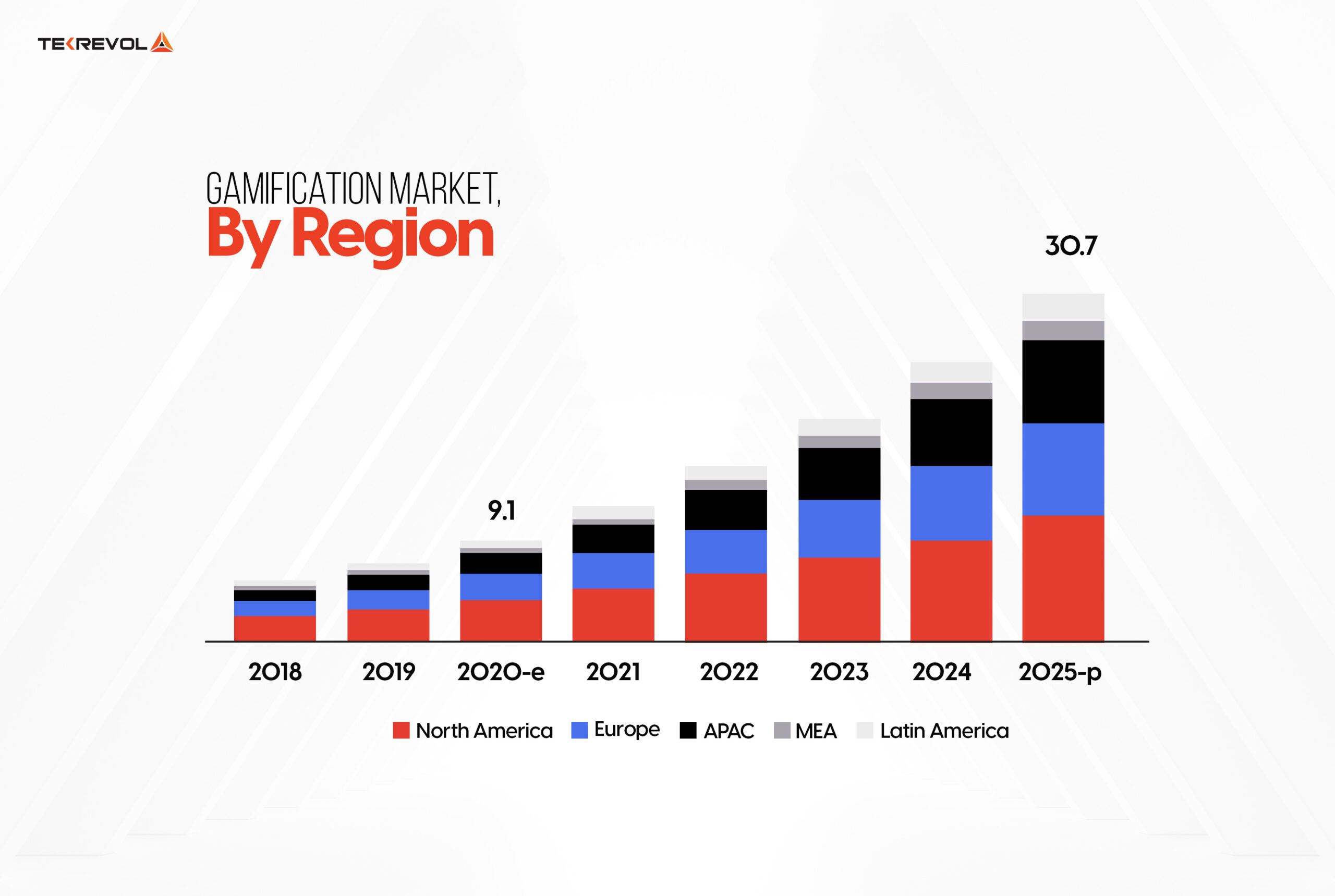
Regional Dominance:
North America stands as the forerunner in the gamification realm, continuing to command the largest share of the global market. With an astonishing 90% of residents owning smartphones and being active mobile internet users, the region is poised for sustained growth in gamification marketing over the next five years.
Europe is not far behind, with significant development anticipated within the forecasted period. The gamification market in Europe is expected to receive a boost from the support of local governments and key stakeholders.
Initiatives like gamification conferences and events in countries such as the United Kingdom highlight the commitment to fostering growth in this transformative sector.
Africa emerges as a dynamic player, showcasing the fastest growth rate in the gamification space. With a forecasted expansion of 60.1% by 2023, the region is becoming a treasure for local and regional providers of gamified solutions.
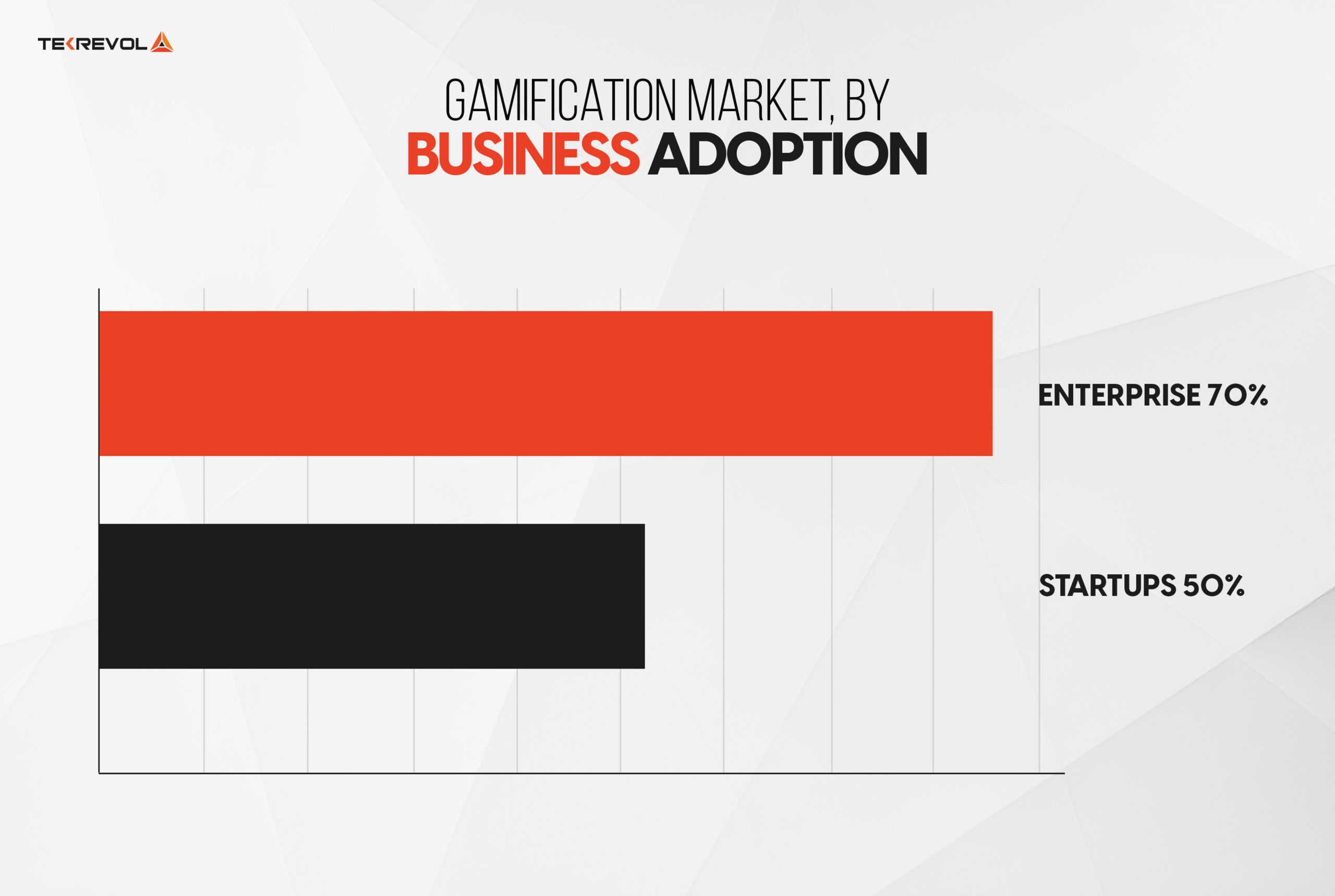
Business Adoption:
In the corporate landscape, gamification has become a staple strategy, as evidenced by a Gartner report revealing its adoption by more than 70% of businesses within the Global 2000 list of companies.
This statistic underscores the widespread recognition of gamification marketing as a powerful tool for enhancing employee engagement, customer loyalty, and overall brand interaction.
It’s not just the giants of the industry leveraging gamification; startups are equally captivated by its potential. A striking 50% of startups have incorporated gamification into their operations, recognizing its ability to captivate audiences, drive user participation, and differentiate their offerings in competitive markets.
- Ready to Score Big in the UK Market?
- Explore the Magic of Gamification with Our Cutting-edge App Development.
Why Use Gamification in Marketing in UK?
Gamification isn’t just a trendy gimmick; it’s a strategic game-changer in the business world to improve user engagement, driving more conversions to win you the maximum sales.
Today, gamification marketing has become the center of attention for game development studio in London due to the increasing user expectations.
Based on the benefits of gamification in marketing, businesses experience up to a staggering 7X higher conversion rate. This statistic underscores the potential of gamification in transforming casual interactions into meaningful conversions.
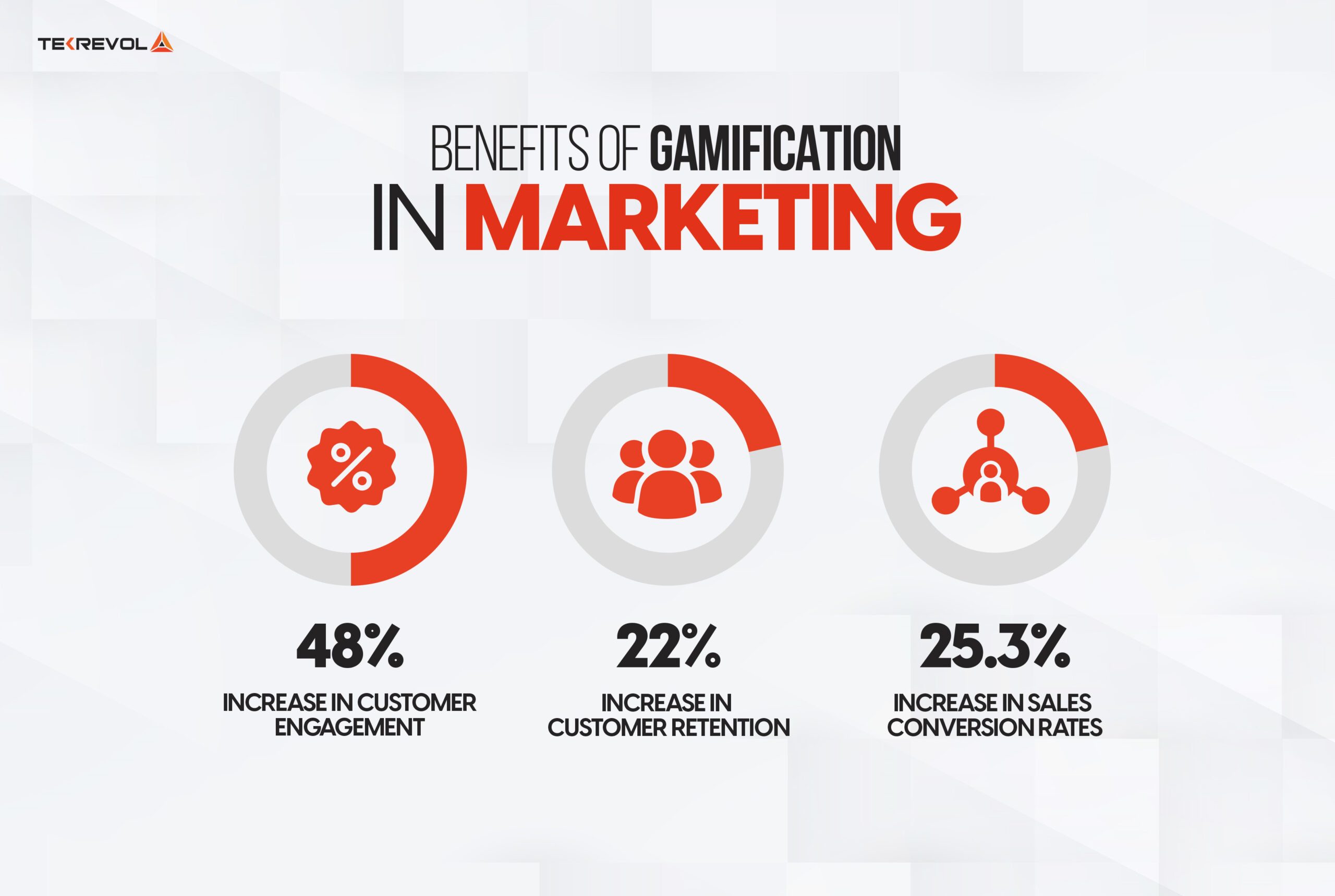
Benefits of Gamification in Marketing
Many businesses have been revolutionized around the world considering the benefits of gamification in marketing. Here are the three immediate effects that a company can gain after deploying a solid gamification marketing strategy:
1. Supercharged Customer Engagement:
Studies highlight the transformative effect of gamified experiences on customer engagement. The adoption of gamification in marketing can lead to an impressive 48% increase in customer engagement.
By integrating game-like elements into marketing strategies, businesses can captivate their audience, fostering a deeper connection that goes beyond traditional approaches.
2. Loyalty Programs That Work:
The power of gamification in loyalty programs is evident in the realm of customer retention. Research from 2023 reveals that companies implementing gamified loyalty programs enjoy a substantial 22% increase in customer retention.
As a result, gamification marketing adds a layer of excitement and reward, encouraging customers to stay committed and loyal to a brand.
3. Sales Conversion Surge:
The impact of gamification isn’t limited to engagement; it extends to the bottom line. Businesses that integrate gamification into their sales processes witness a remarkable 25.3% increase in sales conversion rates in 2023.
By infusing elements of competition, rewards, and interactivity into the sales journey, companies create an environment that motivates potential customers to make a purchase.
5 Best Gamification Marketing Examples
Curious about the impact of gamification in marketing? Explore five compelling gamification marketing examples that have not only captivated audiences but also delivered impressive results.
1. Duolingo: Language Learning Reinvented
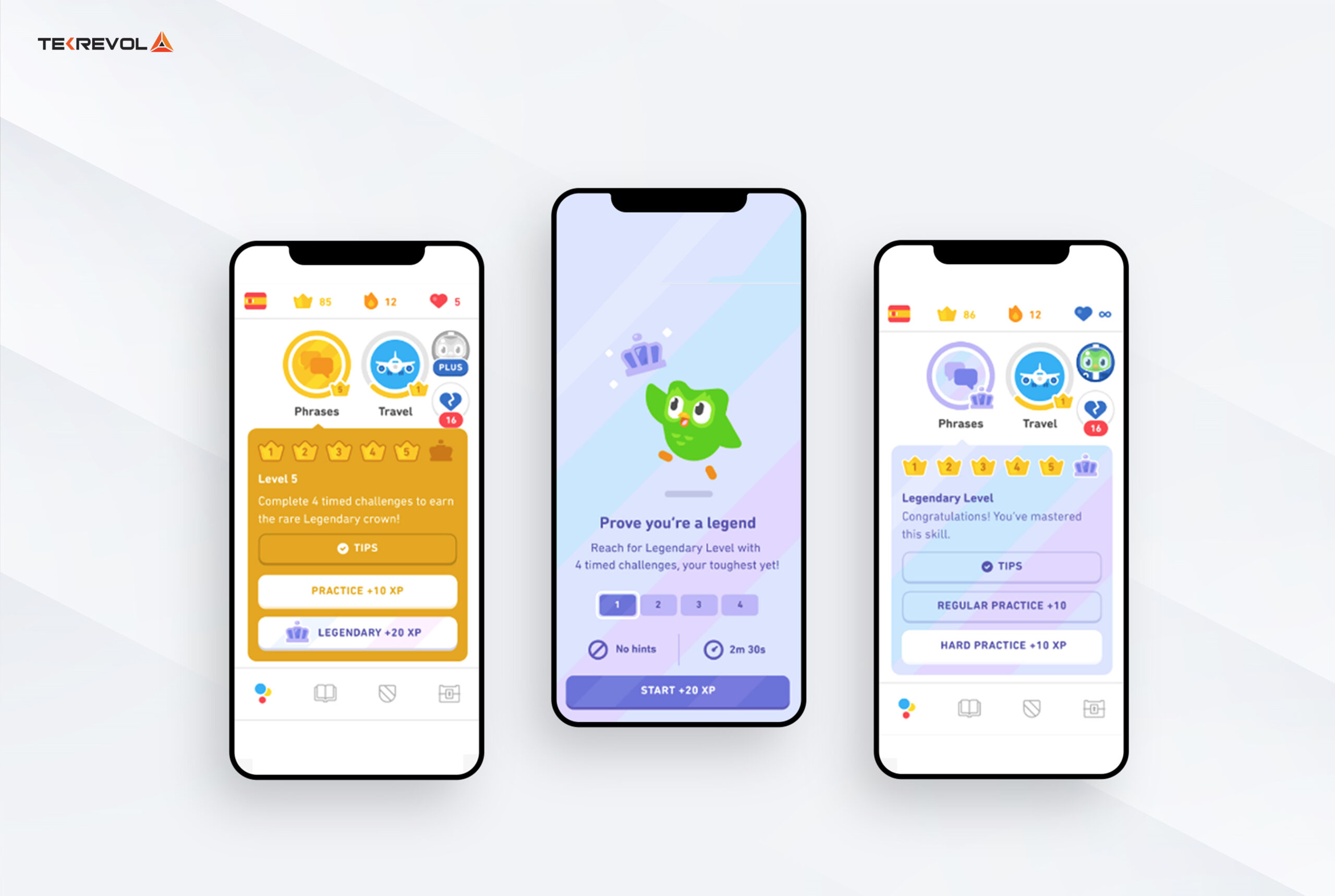
Duolingo, a language-learning platform, has mastered the art of gamification. Users earn points, level up, and unlock achievements as they progress through language lessons. Duolingo has gained millions of users globally by transforming education into an engaging game.
2. McDonald’s Monopoly: A Classic Gamified Campaign
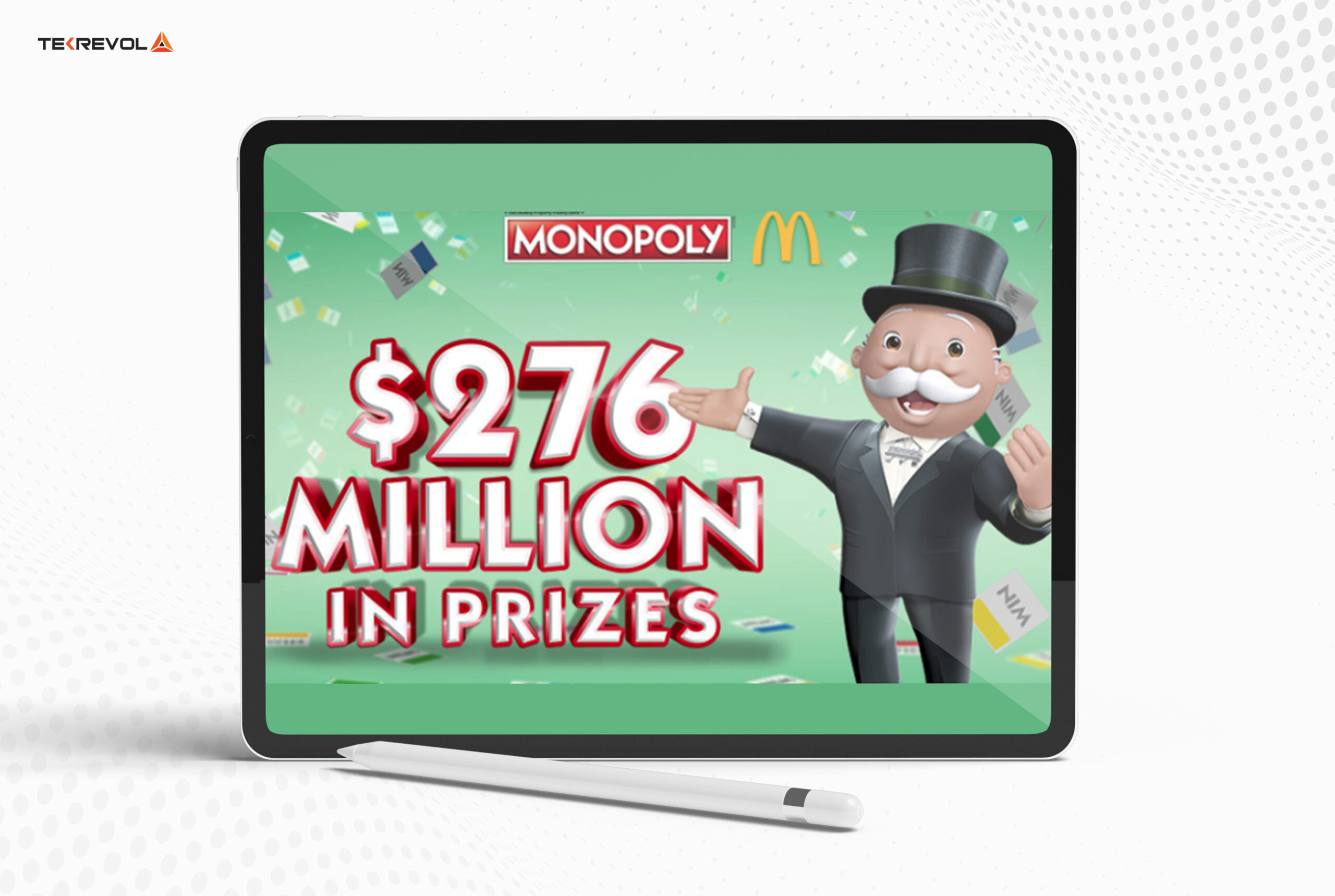
McDonald’s annual Monopoly game is a classic among the gamification marketing examples. Customers collect game pieces to win prizes, creating excitement, and competition, and driving increased foot traffic to McDonald’s restaurants.
3. Waze: Gamifying the Drive
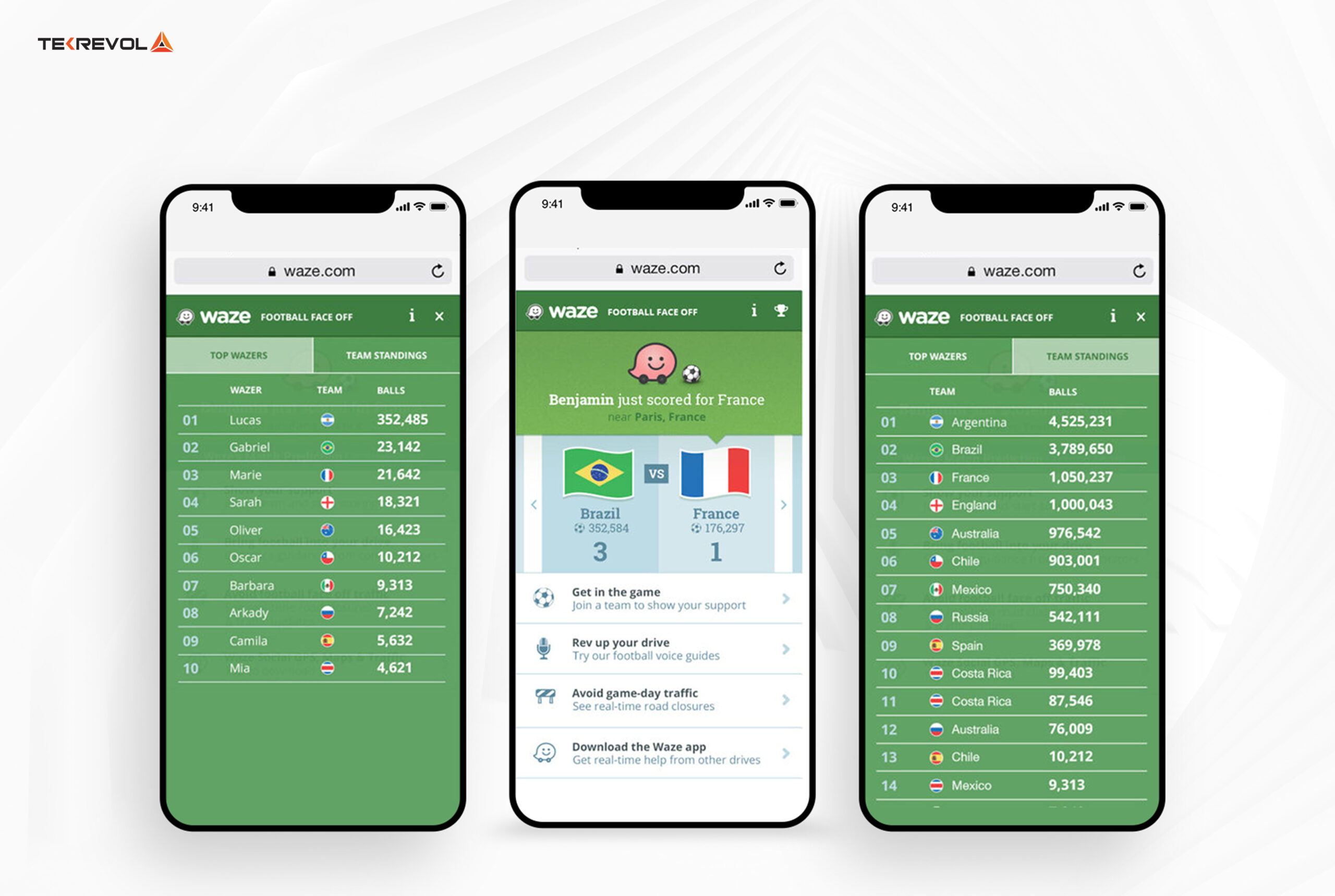
Waze, a navigation app, gamified the driving experience with a points system, rewarding users for contributing real-time traffic information. This campaign not only increased user engagement but also enhanced the overall driving experience through data sharing.
4. Louis Vuitton: Fashion Meets Retro Gaming

Luxury brand Louis Vuitton crafted an engaging 16-bit pixelated game, “Endless Runner,” to promote its 2019 Men’s Fall-Winter show. Players control a pixelated figure navigating a New York City backdrop, overcoming obstacles, and collecting tokens. This retro game effectively combines simplicity with high replay value.
5. The Ben Kinsella Trust: Gamification for a Cause
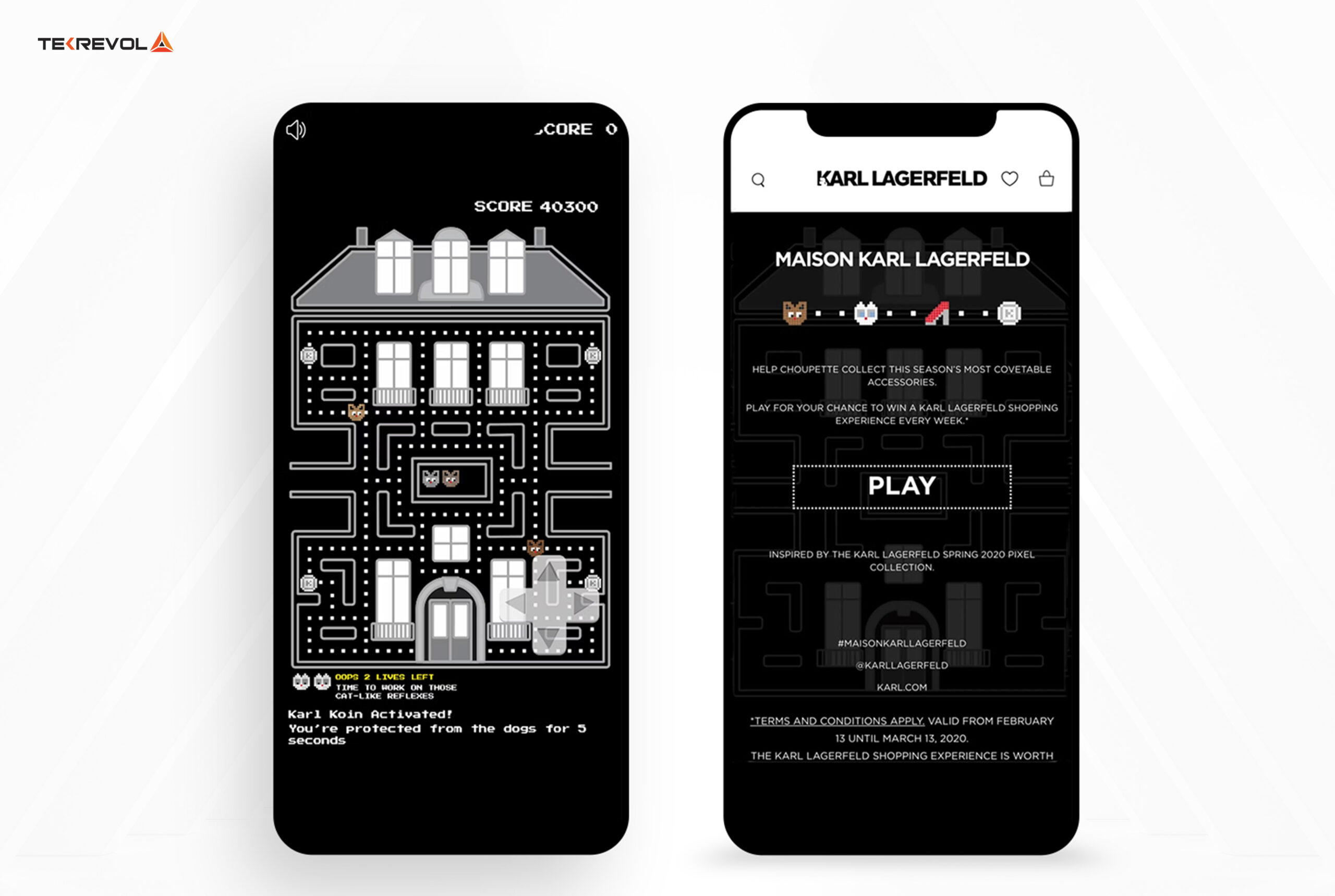
The Ben Kinsella Trust utilized gamification to educate young people about knife crime through the “Knife-Wise” quiz app. Designed to be engaging and intuitive, this app was updated for accessibility across multiple devices, amplifying the impact of its crucial message.
- The Game-Changing Experience Awaits!
- Transform Your User Experience with Our Gamification App Development.
Top 10 Gamification Marketing Companies in UK
Considering the fluent adaptability of gamification in marketing, businesses in the UK are focusing on acquiring this technique for their growth. Here is the list of the top companies that utilize gamification in their marketing strategy:
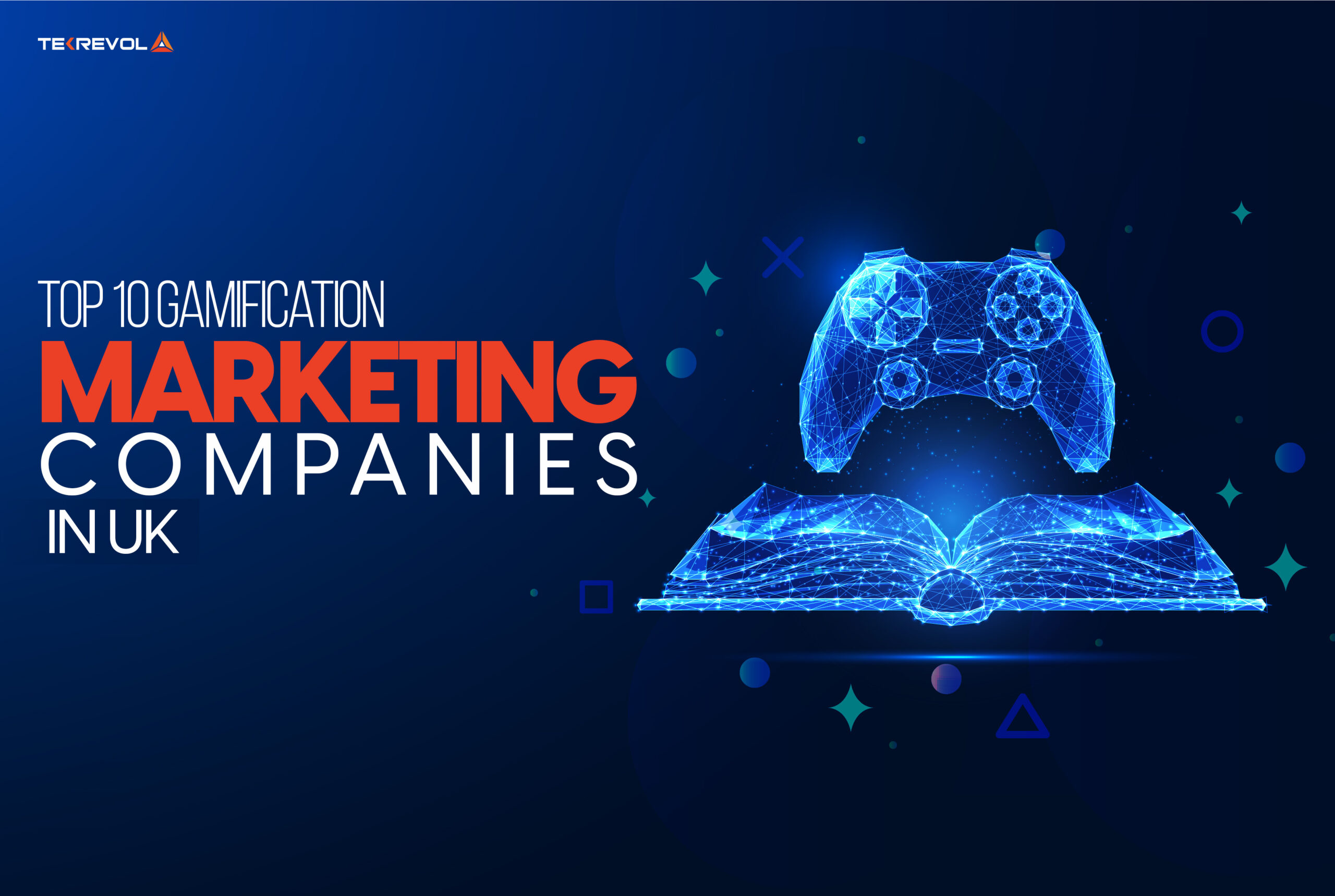
1. Improbable
Improbable, a UK-based games technology company, is dedicated to developing powerful technology solutions aimed at tackling a variety of complex challenges. Leveraging innovation, Improbable seeks to redefine possibilities within the gaming and technology landscape.
2. Study Rocket
Study Rocket is a dynamic learning platform designed to combat procrastination and enhance the learning experience. With a focus on engaging educational content, Study Rocket aims to revolutionize the way students approach their studies, fostering productivity and effective learning habits.
3. Arctic Shores
Arctic Shores stands as a pioneer in behavioral assessments, seamlessly blending neuroscience, artificial intelligence, and game technology to generate data-driven insights into human behavior. The company is at the forefront of shaping the future of talent assessment through innovative and scientifically informed approaches.
4. StepJockey
StepJockey goes beyond the conventional wellness initiatives in corporate offices by introducing a unique approach. They label stairs for calorie burn and gamify stair use, promoting physical activity and overall well-being among employees in a fun and interactive manner.
5. Sportito
Sportito has carved its niche as the go-to platform for daily fantasy sports enthusiasts, offering an engaging space to play and a chance to win real cash daily. With a user-friendly interface and a wide array of sports options, Sportito provides an immersive fantasy sports experience.
6. Rise.global
Rise.global operates as a success-tracking network, providing a platform to monitor and share success stories. Whether for personal achievements or collective goals, it offers a versatile tool to track progress and celebrate success within various contexts.
7. Mambo.IO
Mambo.IO leads the way as a prominent provider of on-premise gamification platforms. Offering solutions that enhance engagement and performance, Mambo.IO empowers businesses to leverage gamification for a wide range of applications, from employee motivation to customer loyalty programs.
8. EvaluAgent
EvaluAgent specializes in software and services tailored for call centers, aiming to enhance staff engagement and motivation. By providing tools to deliver exceptional customer experiences, EvaluAgent contributes to the success of call center operations.
9. Yulife
Yulife stands as a unique lifestyle insurance company, bringing together life insurance, well-being features, and rewards within a single, easy-to-use app. With a focus on holistic insurance and wellness, Yulife aims to redefine the insurance experience for users.
10. CloudApps
CloudApps is a driving force in the realm of sales performance, motivating high-value, winning sales behaviors. Through innovative solutions, CloudApps assists businesses in optimizing their sales strategies and achieving success in a competitive market.
Gamification in Various UK Industries
Explore how gamification is reshaping diverse industries in the UK, from retail and e-commerce adoption for customer engagement to finance and banking for increased financial awareness.
Witness the transformative impact in education, enhancing student performance, and the pivotal role in healthcare, where gamification is revolutionizing patient care and wellness strategies.
Gamification in Retail and E-Commerce
Retailers are transitioning to e-commerce for wider customer reach, while social commerce is gaining popularity for direct brand and influencer interaction. Businesses enhance online channels with gamified content and offers, improving customer engagement and brand awareness.
Startups, utilizing AI or machine learning, personalize content based on customer preferences. Additionally, some startups offer no-code gamification platforms, streamlining content workflows for retailers and brands.
Gamification in Finance and Banking
A lack of financial education hinders effective financial decision-making and limits access to essential tools. The finance industry utilizes gamification to offer engaging educational content with rewards and challenges.
Meanwhile, startups are providing gamified learning solutions for trading and investing, increasing financial awareness. This awareness transforms individuals into leads, driving sales for banks and fintechs. The data from gamified content is used to develop analytics tools, enabling personalized products and services.
Gamification in Education
Expected to reach $278 billion in 2023, the eLearning market is expanding rapidly. Integrating game elements into classrooms enhances learning engagement, significantly improving student performance across primary, middle, and secondary schools.
Moreover, a gamified curriculum enables interactive learning, making complex topics more accessible. This approach motivates students through competition and achievement while providing teachers with insights into individual learning preferences.
Gamification in Healthcare
The healthcare industry, distinct from other sectors using gamification for marketing, leverages it to enhance patient care. In 2023, the health and wellness gamification market is poised to reach $3.82 billion.
Meanwhile, daily challenges and gamified rewards in fitness-tracking apps encourage healthy behaviors, while clinical trials leverage gamification, including leaderboards, to motivate treatment plan adherence and foster patient feedback.
This transformative use of gamification signifies a pivotal shift in healthcare’s approach to patient engagement and wellness strategies.
- Press Play on Your Business Success!
- Elevate Your Brand to New Heights with Our Gamification App Development.
Future Tech Trends for Gamification Marketing in UK
The cutting-edge future of gamification marketing in the UK looks promising considering the current tech trends. Witness the convergence of immersive technologies and innovative solutions that are set to redefine gamification across industries.
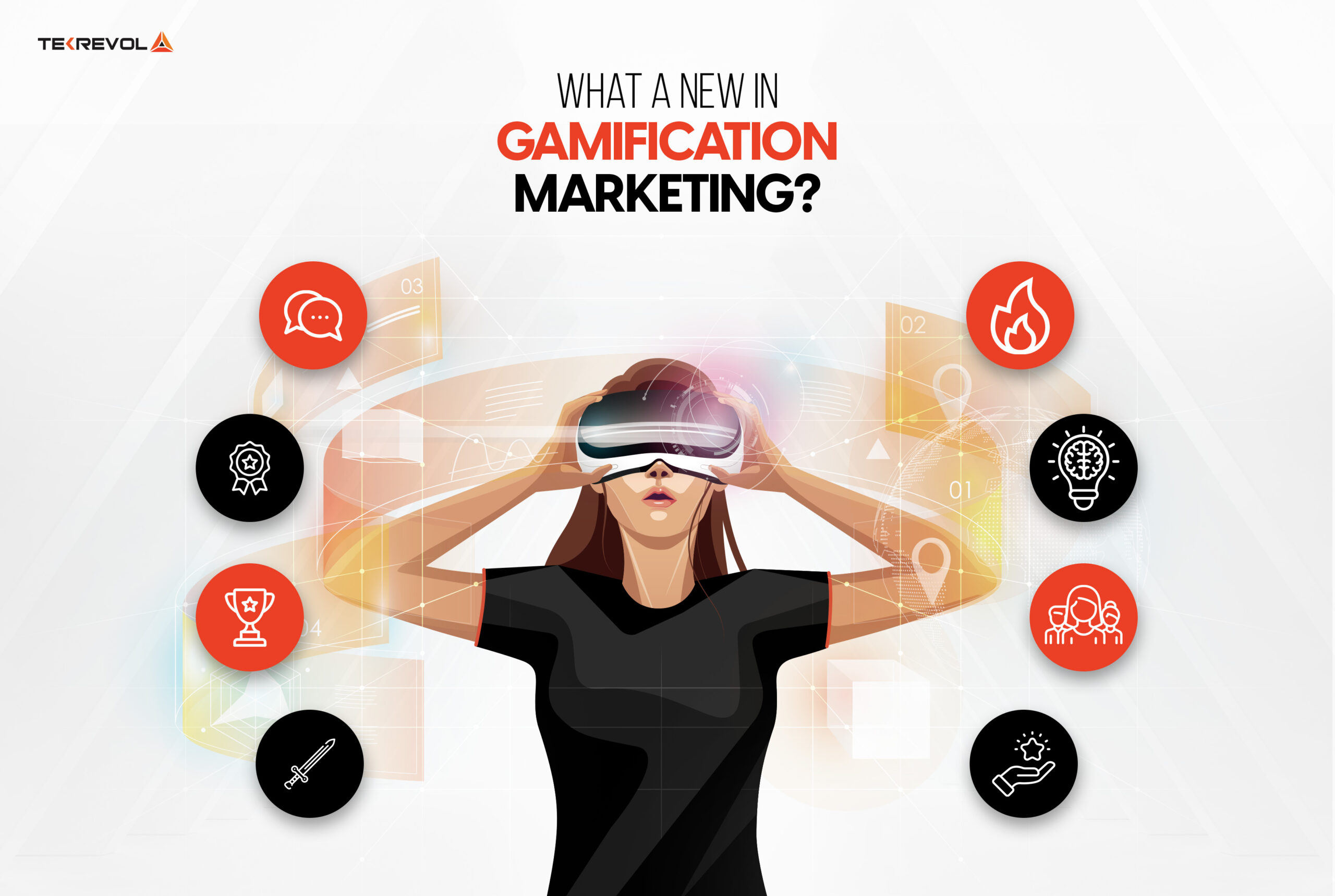
AR VR Partnering with Gamified Solutions
The integration of Augmented Reality (AR) and Virtual Reality (VR) technologies stands out as a prominent trend. Global retailer Walmart is one of the leading examples to revolutionize the shopping experience through AR.
As these innovative technologies become increasingly accessible, businesses are poised to utilize AR and VR to craft engaging and interactive gamified experiences. The continuous improvement in immersive technology capabilities is anticipated to enhance gamified experiences across various domains.
Therefore, The partnership between gamification and AR/VR is set to reach new heights, offering unprecedented possibilities for immersive and captivating experiences.
AI Integration with Gamified Solutions
The integration of AI with gamified solutions is already transforming various aspects of business processes. Procter & Gamble, for instance, utilized AI in their gamified recruitment process, creating an applicant-centered experience with dynamically adjusted assessment tests.
Currently, 83% of leaders recognize AI as a strategic priority. AI-driven gamified systems are reshaping onboarding and training programs, offering real-time data-driven insights and personalized recommendations. Learners benefit from tailor-fit training modules aligned with their preferences.
The synergy between gamification and AI holds boundless potential, and as this technology evolves, we anticipate even more benefits and possibilities for its application.
Synchronization of Internet of Things (IoT) With Gamification Features
In the future, organizations are poised to seamlessly integrate Internet of Things (IoT) devices into their gamified training programs. With a projected 30 billion connected devices by the end of the year, as predicted by a Gartner study.
So, the incorporation of IoT devices introduces a broader scope of data through sensory inputs, enabling richer recommendations. This integration holds immense potential across various contexts and can elevate user uptake and engagement in gamification.
Connecting game mechanics with IoT not only enhances engagement but also promises a more immersive learning experience. The possibilities for adapting technology for future gamified programs are vast and hold endless potential.
Gamification Marketing Strategy: A Step-by-Step Process to Launch a Gamified Campaign in UK
A solid gamified marketing strategy can play a vital role in engaging users, building brand loyalty, and driving desired actions. Below is the complete process to craft an influential gamified campaign:
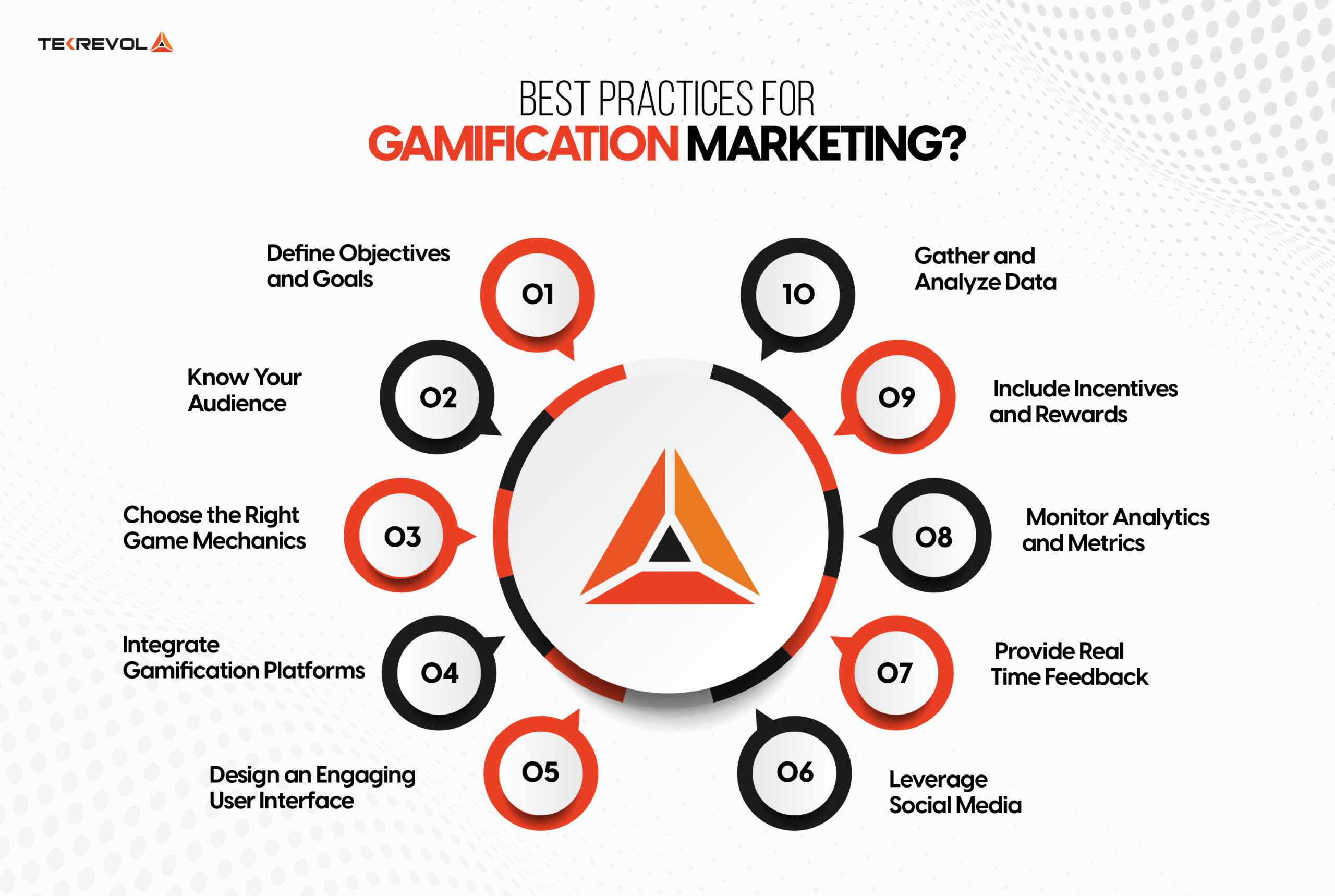
1. Define Objectives and Goals:
Clearly outline the objectives of your gamified campaign. Whether it’s increasing brand awareness, boosting customer engagement, or driving sales, you can develop a firm base for your gamification strategy.
2. Know Your Audience:
You must research and understand your target audience’s preferences, interests, and behaviors. After that you can customize the gamified campaign to relate to your specific demographic, ensuring it captures the user’s attention to engage them.
3. Choose the Right Game Mechanics:
Select game mechanics that align with your campaign goals. Whether it’s points, badges, leaderboards, or rewards, ensure they motivate your audience to participate and contribute to the desired outcomes.
4. Integrate Gamification Platforms:
Choose a gamification platform that aligns with your campaign objectives. Platforms like Badgeville, Bunchball, or your custom solution can provide the infrastructure needed for a seamless gamified experience.
5. Design an Engaging User Interface:
You need to create an intuitive and visually appealing user interface for your gamified campaign. Make sure that the design is user-friendly, resonates with your brand’s identity, and makes navigation through the game enjoyable.
6. Leverage Social Media:
Use social media platforms to promote and amplify your gamified campaign. Encourage participants to share their achievements, scores, or experiences, creating a viral effect that extends your campaign’s reach.
7. Provide Real-Time Feedback:
Always provide real-time feedback to keep participants engaged. Whether it’s acknowledging achievements or notifying you about upcoming challenges, instant feedback enhances the user experience and motivates continued interaction.
8. Monitor Analytics and Metrics:
It is essential to implement robust analytics tools to monitor the performance of your gamified campaign. You can track key metrics such as engagement levels, user retention, and conversion rates to assess the campaign’s success and identify areas for improvement.
9. Include Incentives and Rewards:
You can Motivate participating users with enticing incentives and rewards. Whether it’s exclusive discounts, access to premium content, or tangible prizes, providing incentives enhances the perceived value of the gamified experience.
10. Gather and Analyze Data:
You can further improve your strategy by analyzing data generated during the campaign. Understand user behavior, preferences, and engagement patterns to refine future gamified initiatives.
The Bottom Line: Concluding the Gamification Marketing Saga
In summary, the blog explores the gamification marketing landscape in the UK. It covers the multiple aspects of gamification, considering its psychological foundation, and evolution in marketing.
Meanwhile, the current scenario underscores gamification’s pivotal role across different business scales, offering benefits to enhance their growth followed by the examples and top companies in UK exemplify gamification’s widespread adoption.
The blog also anticipates future trends highlighting gamification’s enduring potential. Further, a concise guide is provided for launching successful gamified campaigns. So, having all the valuable information, you may get a clear idea about gamification marketing.
Therefore, we encourage businesses to integrate gamification in their marketing campaigns to experience exponential growth toward business sustainability.

 3326 Views
3326 Views December 25, 2023
December 25, 2023

